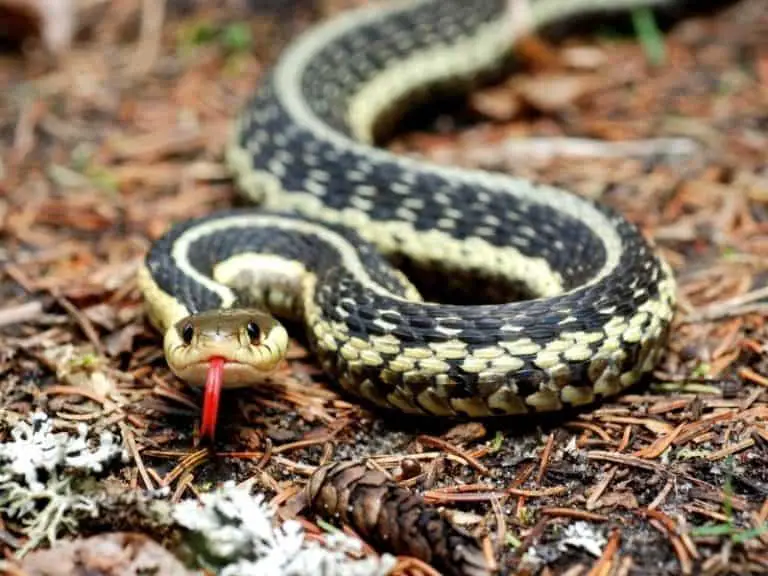Here’s What to Pour Down a Snake Hole
Seeing a snake hole or two in your yard is understandably unsettling, and people usually want to do something about it, because these holes can indicate that a snake is present in your property and immediate surroundings.
It is a good thing that there are only basically five kinds of venomous snakes present in the US, namely coral snakes, copperheads, rattlesnakes, cottonmouths, and lastly, sea snakes.
It is also true that almost all snake holes have not been made by the snakes themselves, but have been made and used by rodents such as chipmunks.
They have only been invaded or stolen and used by snakes. If you want snakes out of your yard, we can discuss how you can drive them from snake holes.
To eliminate snakes from a snake hole, the easiest and safest way is to pour a snake hole plug product specifically designed to fill these holes permanently. If you plug all holes in your property and apply other tried and tested preventive measures, you can discourage snakes from living there.
Using a snake and rodent hole plug product is essentially the best material to pour down a snake hole and is the best way of fill it up.
It is also very humane as long as there are no snakes in the hole during the time that the product is poured there. It is not recommended to kill snakes due to many reasons, both practical and ethical.
With this in mind, let us discuss all of the options involved in eliminating snakes safely and humanely and filling up snake holes.
What To Do With Snake Holes
While most of the snakes you will encounter in your area are non-venomous, it is still necessary to use precaution and make sure you are safe when disrupting their habitat and hole in any way.
It is good to know that you may not worry about at least one class of venomous snakes present in the US, and these are the sea snakes.
This is due to the fact that they are only present in the seas and oceans, and are therefore definitely absent in your yard.
This leaves you with only coral snakes, copperheads, rattlesnakes, and cottonmouths to consider, which may variably be present or absent in your location.
If you want the snakes in your yard to go away, and if they love using the holes in your property as their shelter, you can block off their snake holes in order to disturb them and drive them away, and hopefully discourage these creatures from returning.
Why do snakes like holes?
They are attracted to them because of their cool ambiance, and because they are dark and private.
Snakes are quite shy.
They can enter and stay in many kinds of holes, such as those created by rodents in your yard as well as in stumps, building crevices, and other places.
In addition, rodent holes, which have been made by rodents for the purpose of living there, also contain the ideal food for snakes: rats, mice, and other tasty animal prey.
The snakes do not need to dig their own holes; they just invade and steal the holes from the rodents while having a filling meal at the same time.
This is a win-win situation for snakes. this is why they love occupying rodent holes so much and make them their own.
It is important to use the highest level of caution if you decide to cover up snake holes by yourself. You should be prepared at all times for the possibility of an intimate encounter with the snakes hiding inside them.
When you find snake holes in your yard, you can do several things. We enumerate and discuss below how to get a snake out of a hole in the ground and what to do about snake holes.
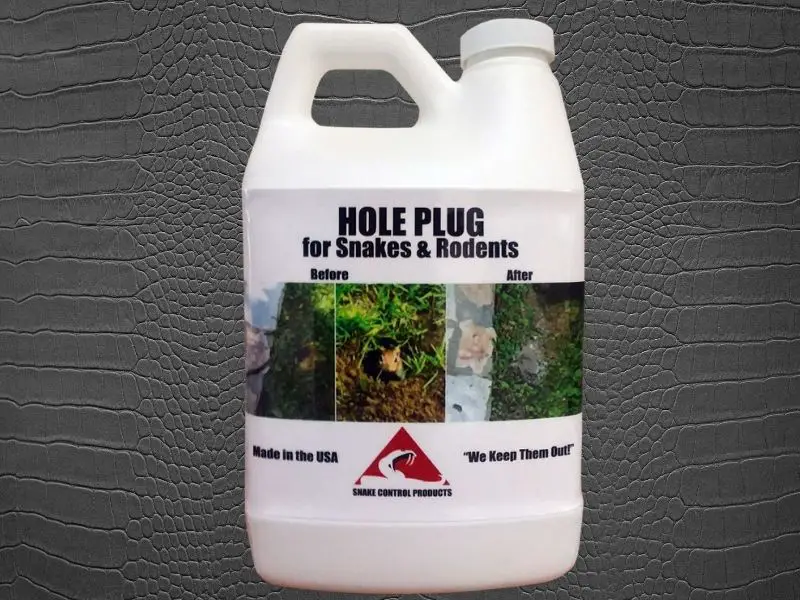
Use a snake hole plug product
The easiest and most practical solution to permanently seal snake holes safely is to use a snake and rodent hole plug product.
It causes permanent sealing of the hole and can be used in as many holes as you can see until you eventually drive these pests out for good.
Using this product also has the added benefit of also depriving rodent pests of their habitat, and can contribute to driving them away from your property as well.
The product can be used in the yard, in your garden, and around your home, wherever snake holes can be found on the ground.
The hole will be sealed within minutes, after which you can cover the sealed hole with topsoil in order to hide the unsightly appearance of the plugged hole.
Such a product can be made of a quick-setting type of hardening material that is mixed with water.
It acts much as cement does. It can be installed within minutes, and it completely plugs snake, rodent, and mole holes.
The product kit may include the poly base, a push rod to safely place the base within the hole, and the quick-setting filling material.
To use the snake and rodent hole plug product, just push the poly base into the hole using the push rod.
Afterward, pour the filler in the hole up to a level that is slightly above the level of the ground. Then, add water to this filler and wait until it sets.
If you do not want the hardened mixture to be visible in your yard (for obvious aesthetic purposes), you can put soil over it to make it look more natural again.
Here’s a product you can use: Hole Plug
Cover the hole with other materials
You can also cover the snake hole using wire fencing, burlap, and boards.
It is important to remember, however, not to excessively pile up the top of the hole, because you might only inadvertently create a new burrowing and hiding place for the snakes, a lovely habitat that will defeat your purpose of wanting to drive them away in the first place.
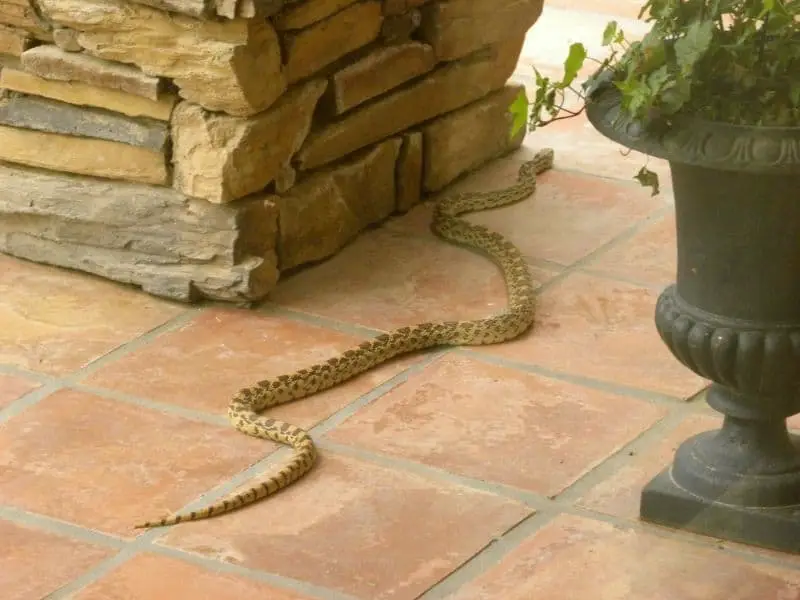
Leave the hole alone
When you see a hole in your yard and garden and you have reason to believe that it might be harboring a snake, one of the easiest and simplest things you can do is to just leave the hole alone.
You can rest assured in the fact that there are just four kinds of venomous terrestrial snakes all over the US.
Therefore, the snake inside the hole in your yard has a very high likelihood of being a harmless species, such as a garter snake, which is very widespread in the country and is common in a lot of gardens.
Snakes serve a natural purpose and beneficial role in our ecosystem.
Their food includes many pests whose populations, when left unchecked, can wreak havoc on the environment and our collective health.
Snakes prey on frogs, insects, and other pests such as rodents, including squirrels, rats, and mice.
Majority of snake species are very shy as well; they always prefer to slither away from you when they are disturbed.
They prefer to leave you alone and also be left alone in peace. They can also stay immobile in the hopes that you will not bother them.
The latter behavior can cause a bit of a problem when you do not see a snake and you inadvertently disturb them because they are staying still, waiting for you to go away.
It does not diminish the fact, however, that snakes contribute positively to the health and beauty of your garden and yard.
Related Article: 10 Smells That Snakes Actually Hate
Trap or repel snakes going in and out of the hole
There are several means of trapping and repelling snakes that live in the hole.
These different methods may have varying effectiveness and may warrant trying out. They can complement your efforts in eradicating the snakes on your property.
One effective means of trapping some snake species involve using glue boards. It is, however, messy. You may also use traps, as well as install snake fencing, which can be extremely expensive.
Users and professional exterminators have differing opinions regarding the use of snake repellent products.
Some people swear that they are highly effective, while others are sure that they are totally ineffective. At least one scientific study showed that they are effective enough to warrant use in several species of snakes.
Related Article: 5 Snake Attracting and 22 Snake Repelling Plants
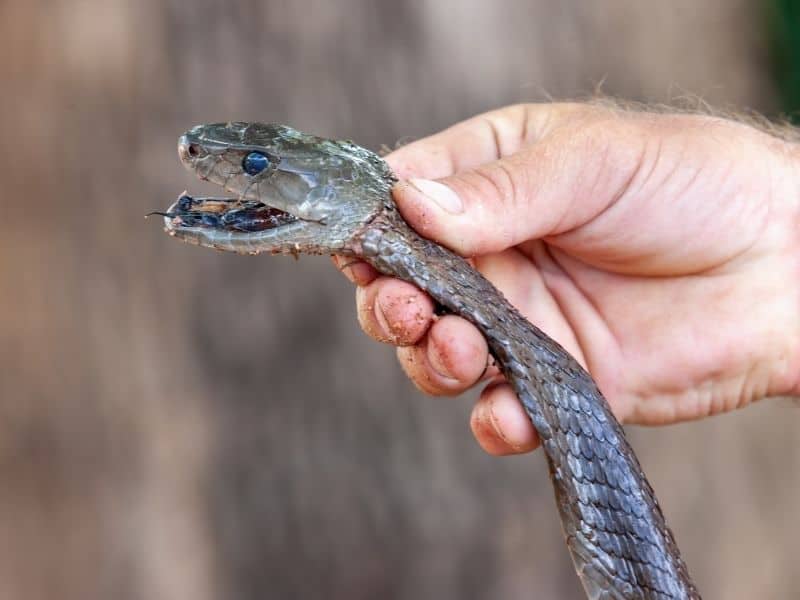
Call an expert and professional snake remover
While snakes may be a good contributor to the health of the ecosystem, it is still true that they can endanger you, your children, and your pets, especially if they are venomous.
In addition, you can also harbor an irrational (but understandable) fear of these creatures.
Thus, it may be a good option to not only leave them alone, but also possibly contact a snake removal expert and professional.
A lot of people feel squeamish at the mere thought of snakes. They cannot imagine encountering and seeing them and feel extremely unpleasant with having them around.
It is impractical for them to get rid of the snakes themselves, not to mention the fact that snakes could be dangerous. In addition, the snakes in your yard may be quite large in size.
This will be a condition wherein it is advisable to call a wildlife and pest control and management professional to your property so that they can assess your situation.
From their assessment, several options may be presented to you, many of which will involve the methods we just discussed.
Related Article: Who to Call When You See a Snake
Things You Should Never Do With Snakes And Snake Holes
It is necessary to be careful and to remain safe when dealing with the snakes in your yard.
Yes, most snake species are non-venomous and harmless, but as a non-expert, you may mistake a venomous snake for a harmless one.
You need to take extreme caution at all times if you are not a professional snake handler.
You should adopt such an attitude when dealing with any kind of wild animal, but it is imperative to be more aware of this when dealing with snakes.
Even if most snakes are non-venomous, you should never, ever pick any snake with your bare hands. Even non-venomous snakes do bite and they have many rows of sharp teeth that can cause injury and infection.
Instead of handling them bare-handed, you can use thick gloves with long sleeves designed for snakes.
Also use long sticks, snake hooks, and snake tongs. You should have these tools in hand in extracting, transporting, or relocating snakes.
You should never transport and relocate snakes without knowing the local and state laws concerned with such activities and issues.
Aside from laws on relocation, it is also illegal in many states to the club, shoot, or otherwise harm or kill snakes.
You should also never use fumigation in your efforts to eliminate snakes, because this is illegal according to federal and state laws.
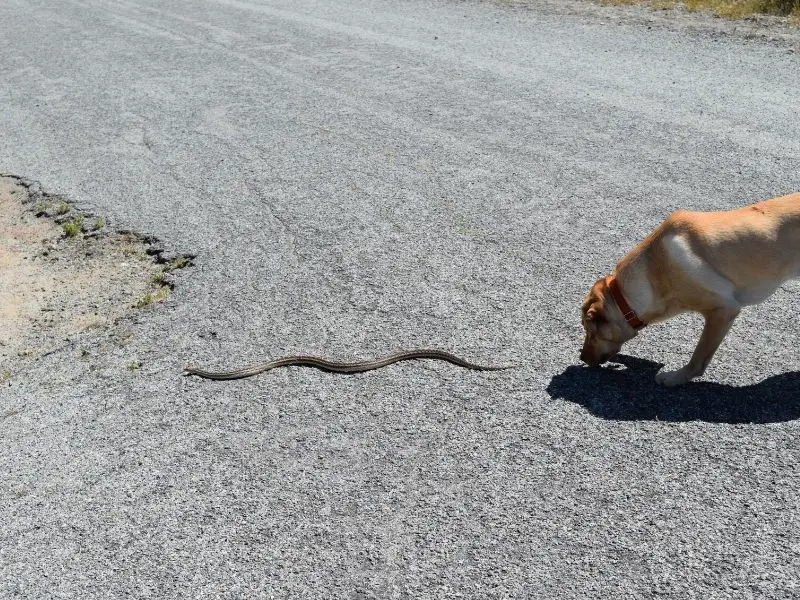
Hiding And Burrowing Behavior Of Snakes
Snakes love hiding inside holes for the safety and protection they provide.
Most of these holes have been previously occupied and created by turtles, frogs, and rodents.
Snakes can and do hide within the hollow parts of hardwood and other trees; under the ground leaf litter; inside and under the barks of trees; and under rocks and logs.
The majority of terrestrial snake species are capable of burrowing into the leaf litter and in very loose soil. In contrast, very, very few snakes are able to make holes in packed soil.
There are many snake species that are excellent diggers of loose substrates where suc native to h soils or sand naturally occur.
These are usually snake species native to African, Asian, and Australian regions.
These loose soil substrates, however, are incapable of forming stable holes or proper burrows. Thus, when snakes burrow into them, they end up burying themselves without creating any holes.
Snake Holes And Their Characteristics
Let us now discuss how to identify a snake hole.
Snakes love to stay inside places that are snug because these give them security and safety. They are most comfortable in places that let them have their backs against the ceiling, such as in tight retreats and burrows.
There are snake species that have fidelity to a certain site, while other species have no true home range, using only whatever available shelter there is.
It is possible to determine if a snake hole experienced recent use either by snakes or other animals if its entrance does not have any fallen leaves, spider webs, and any other debris.
Snake holes are actually created by other animals.
A lot of rodent species, such as various mice, rats, prairie dogs, squirrels, and chipmunks, usually make these holes. Snakes only eat these animals then steal the burrow, using it as their own.
Certain water and crayfish snakes utilize those burrows created by frogs, crayfishes, and gopher tortoises.
Since snakes usually steal the burrows and holes of rodents and other animals, it is important to determine if the hole you have in your yard actually harbors a snake, before you consider conducting any snake removal efforts.
But how do you determine if a hole does indeed contain a snake?
Snake holes usually have different sizes but are often circular.
They are also commonly embedded in the ground, although as previously mentioned, snake holes can also be in trees or even in cracks in concrete.
Unfortunately, the only way to determine with 100% certainty that a hole has a snake is to actually see the snake going in and out of the hole.
Seeing the snake lingering on your property where holes are present may be a sign that the snakes are using the holes. However, this is not 100% certain.
Nonetheless, you can still look for signs that show if these holes indeed contain snakes. Some of the signs of snakes in your yard and in holes are the following:
- There are no debris or spider webs that block or surround the hole. If these materials are present, it is most probable that no snake is occupying your hole. If theentrance is clear, then an animal may be currently using it. This is one of the ways of determining if a creature is living in the hole.
- There is the presence of fresh snake skin that has been recently shed near the hole. This is a sign that there is a snake in the immediate area. It will not be sure, however, whether is it living in the vicinity or is just passing by, or if it is actually using the hole.
- There is the presence of snake feces in the area. Snake feces is tubular in shape, and contains the same material as bird droppings, i.e. dark-colored or greenish fecal matter combined with chalky and white streaks of urine. It is also possible to have pieces of fur and bones in the feces.
Related Questions
Is it advisable to use snake repellents?
While some scientific studies reported that commercial snake repellents are effective, many other actual users say that they do not work.
To discourage snakes from lingering in your yard or property, it is still best to keep the area tidy, clean, and free of piles and debris that snakes love to hide in.
By the way, if you want to use a repellant I suggest Victor-Snake-Away.
Is it advisable to let non-venomous and harmless snakes stay in the yard?
Definitely. They generally keep to themselves, are not noisy, eat garden and house pests. Some species of snakes, such as kingsnakes, even eat venomous snake species!
Sources:
- https://animals.mom.com/what-type-of-noise-scares-snakes-away-7721919.html
- https://varmentguard.com/blog/how-to-identify-snake-holes-in-your-yard
- https://animals.mom.com/what-to-do-with-a-snake-hole-12583295.html
- https://animals.mom.com/what-can-i-use-to-get-a-snake-out-of-my-car-12584251.html
- http://snakecontrolproducts.com/product/hole-plug/
- https://www.countryliving.com/home-maintenance/cleaning/a30212354/how-to-get-rid-of-snakes/
Photo credit: ©canva.com
Medical Disclaimer: TheHomePestControl is a digital publisher and does not offer personal health or medical advice. The contents of this website are not intended to substitute for professional medical advice, diagnosis, or treatment.
Affiliate Disclaimer: As an Amazon Associate, I earn from qualifying purchases made on our website. If you make a purchase through links from this website, I may earn a commission at no additional cost to you.

![Can Cats Sense Snakes [Yes, And Here’s What They Do]](https://wypestcontrol.com/wp-content/uploads/cat-attacking-snake-768x576.jpg)
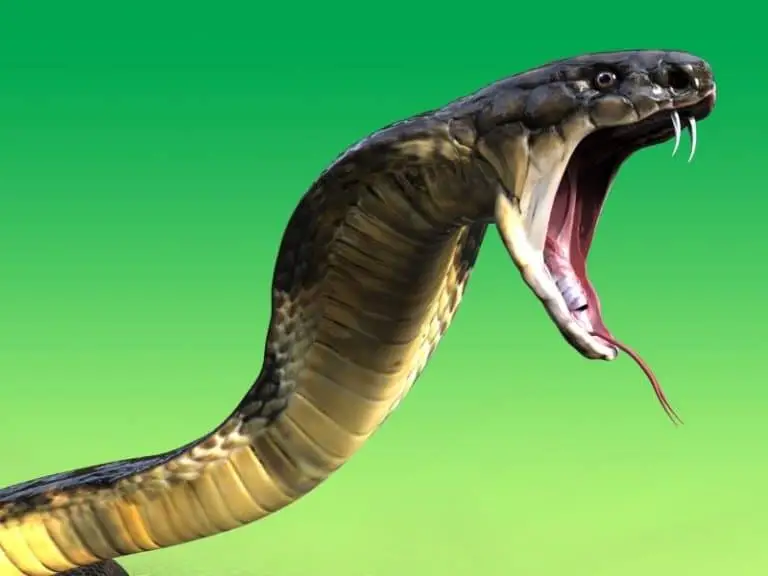
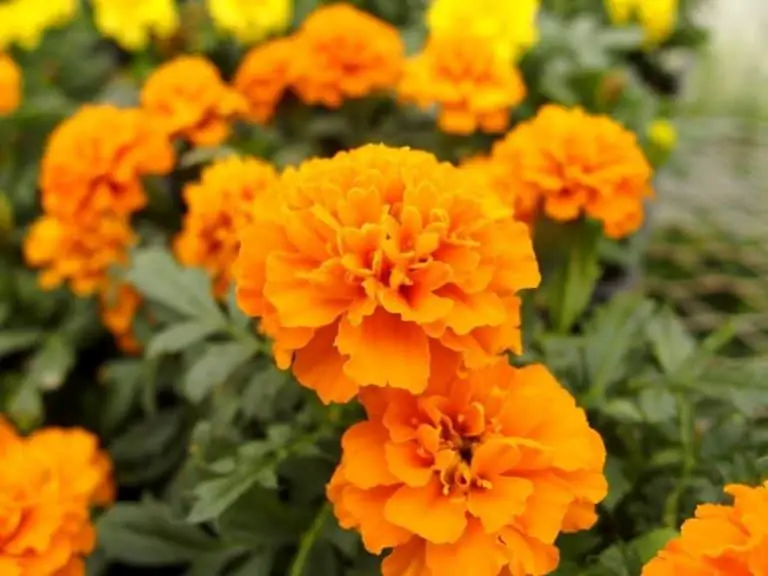
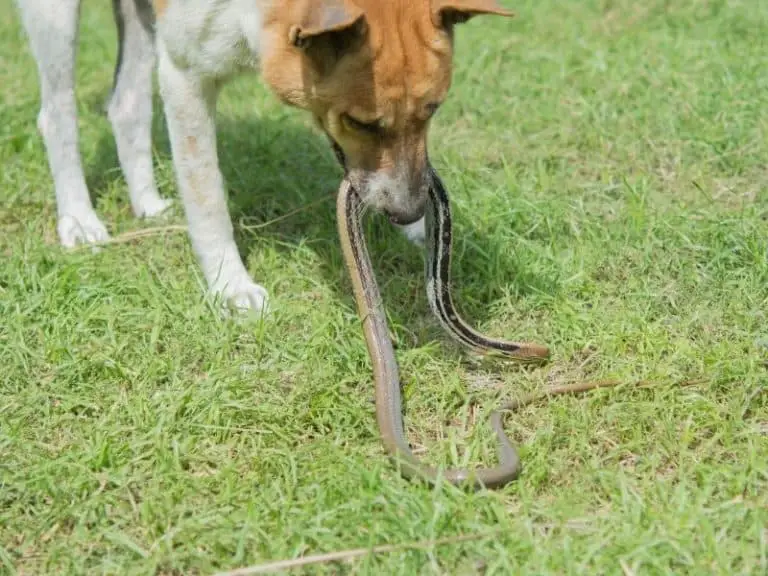
![Does Victor Snake-A-Way Work [Expert Opinion]](https://wypestcontrol.com/wp-content/uploads/victor-snake-away-768x576.jpg)
